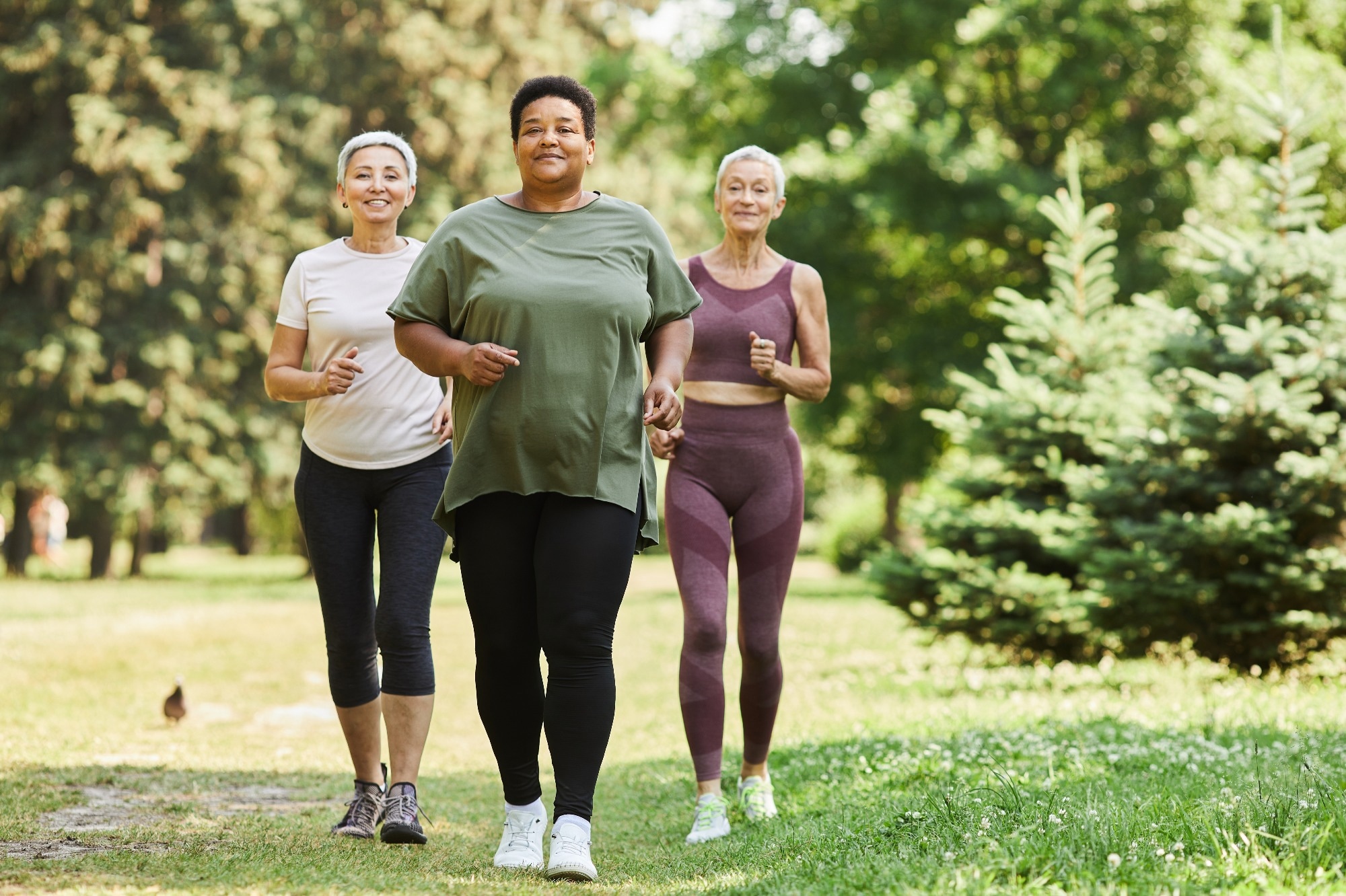Their findings indicate that while strong evidence supports PANS, further research is needed to address gaps and fully understand the role of health professionals in encouraging this behavior.
 Study: Physical Activity in Natural Settings: An Opportunity for Lifestyle Medicine. Image Credit: SeventyFour/Shutterstock.com
Study: Physical Activity in Natural Settings: An Opportunity for Lifestyle Medicine. Image Credit: SeventyFour/Shutterstock.com
Background
Regular physical activity offers numerous health benefits, such as preventing chronic conditions, enhancing immune function, improving mental health, and increasing life expectancy.
Growing evidence shows that spending time in nature provides additional health benefits, including improved cognitive function, mood, and immune response.
Despite well-established guidelines recommending adults to engage in 150-300 minutes of moderate or 75-150 minutes of vigorous activity weekly, many Americans remain inactive, with less than a quarter meeting both aerobic and muscle strengthening guidelines.
This review explored whether PANS offers more benefits than indoor activity, examined the factors influencing PANS, and discussed strategies for promoting PANS, particularly among priority populations.
Benefits of PANS over other exercise
Physical activity can occur in natural or non-natural settings, such as walking in a forest versus a mall. While exercise science quantifies activity by time and intensity, nature exposure studies control for activity levels to test environmental effects.
The concept of "green exercise" suggests that PANS offers additional benefits. Research comparing PANS to indoor exercise indicates some advantages in cognitive function, mood, social interaction, and enjoyment.
However, systematic reviews reveal that studies are diverse, often low quality, and results inconsistent. While PANS shows potential for superior short-term benefits, conclusive evidence remains lacking, particularly regarding long-term outcomes.
Nature connectedness and mental health
The concept of nature connectedness is crucial to optimize the mental health benefits of PANS. Nature connectedness refers to how much a person identifies with and feels connected to nature.
Studies indicate that individuals with high nature connectedness experience greater well-being, reduced anxiety, and increased life satisfaction when engaging in PANS.
For example, a study found that physically active adults with strong nature connectedness reported higher eudaimonic well-being.
Promoting nature connectedness through early childhood experiences, education, and biophilic environments could enhance the mental health benefits of PANS.
Drivers and associations of PANS
PANS can be an effective venue for encouraging physical activity, as people often prefer outdoor environments. Studies show that individuals visiting greenspaces weekly are more likely to meet recommended physical activity levels.
Factors influencing increased visits to natural settings include accessibility, cost, and the physical features of parks and trails, such as amenities and maintenance. Due to land ownership patterns, urban areas may have better access to parks than rural areas.
Programming, public engagement, and a sense of community ownership also boost visitation. Individual and social factors, such as feeling welcome, perceived safety, and personal attitudes toward nature, play significant roles.
Perceptions of safety, especially for women, seniors, and parents, are crucial, as is the belief in the benefits of nature.
Positive attitudes towards greenspaces can increase visitation, further promoting physical activity. Once in natural settings, these factors combined can enhance physical activity levels, contributing to better overall health.
Promoting PANS to maximize health benefits
Promoting physical activity in natural settings involves more than just increasing parkland; facilities and amenities such as sports courts, playgrounds, paths, and natural features enhance park use.
Interventions like playgrounds, safe access, and park renovations are effective, though study quality varies. Even small urban parks can boost activity by encouraging walking. Shade, provided by trees or built structures, is crucial as climate change intensifies.
Neighborhood context and organized activities like yoga or sports leagues also drive park use. Green schoolyards and community gardens are special venues promoting physical activity, particularly benefiting children's health and reducing sedentary time.
However, demographic factors influence park use, with variations across gender and ethnic groups. Comprehensive strategies combining infrastructure improvements and structured programs are most effective in promoting physical activity in natural settings.
Promoting PANS must address barriers faced by priority populations, such as Black, Indigenous, and People of Color (BIPOC) and immigrant communities, who encounter discrimination and inequities in access to quality greenspaces.
Strategies include equitable greenspace distribution, community engagement, and anti-displacement policies. Children benefit from ample, safe, and engaging outdoor spaces, while older adults need well-maintained parks with amenities like seating and restrooms.
People with disabilities face physical and social barriers that can be mitigated through inclusive design and programming.
Health professionals can promote PANS by prescribing nature contact, modeling behavior, engaging in community efforts, and directing health funds toward green space creation and maintenance.
Conclusions
PANS is a powerful strategy to enhance both physical activity and nature exposure. Promoting PANS offers significant health benefits, but longer-term studies are needed.
Factors such as access, physical features, neighborhood context, and programming influence time spent in PANS and physical activity levels.
Barriers for BIPOC communities, children, older adults, and people with disabilities must be addressed. Health professionals can support PANS through prescriptions, modeling, and community programs.